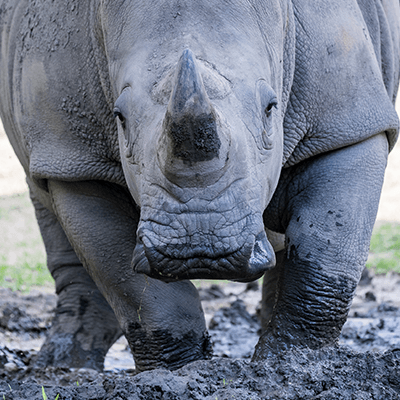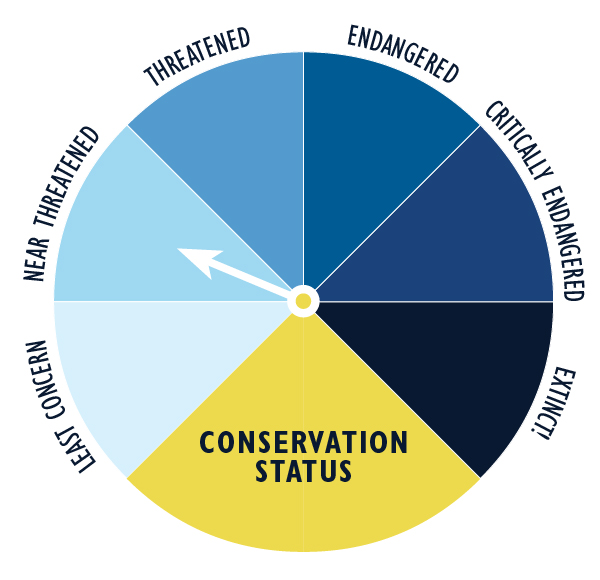
About White Rhinoceros
White rhinoceroses are one of the largest land mammals in the world. They have relatively small eyes compared to their body size, squared-shaped lips, a long neck with a hump, along with two horns of unequal sizes. White rhinoceroses are generally non-aggressive animals. However, females with young calves are more aggressive than males and other females because they are protective of their calves.
Habitat
Typical habitat for white rhinoceros includes dense forests, savannas, and woodlands with grassy openings. White rhinoceroses usually live near water sources because they consume water as often as twice a day.
Diet
White rhinoceroses are strictly herbivores. Their diet includes thick bush covers and short grasses.
Family Life
White rhinoceroses communicate using several different noises; including grunts and snorts to warn family members when danger is near. As noted, female rhinoceroses are very protective of their young, willing to fight off danger as they charge at predators. White rhinoceroses are also nearsighted, but they have heightened senses of hearing and smell. Therefore, olfactory communications play a major role in securing their territories.
Conservation Status
The conservation status of the White Rhinoceros is classified as near threatened.
Threats
- A major threat to the white rhinoceros population is poaching, mostly for their horns for use in traditional Chinese medicines and for sale on the black market.
Facts about White Rhinoceros
Class:
Mammalia (mammals)Order:
Perissodactyla (odd-toed ungulates)Family:
Rhinocerotidae (rhinoceros)Genus:
CeratotheriumSpecies:
Ceratotherium simum (white rhinoceros)Life Span:
46 – 50 yearsSize:
5 – 6 feet (1.5 – 1.8 m) (at shoulder); 12.5 – 15 feet (3.8 – 4.5 m) longWeight:
2,203 – 7,930 pounds (999 – 3,538 kg)Tail Length:
1.9 – 2.5 feet (22 – 30 inches)Front Horn Length:
37 – 79 inches (93 – 200 cm)Rear Horn Length:
Up to 22 inches (55 cm)
Fun Facts
- Rhinoceros horns are made of keratin, just like your hair and fingernails. As you would file your nails, rhinos often rub their horns to make them shorter. If their horns were to break off, a new one would slowly grow back.
- The square lips of the white rhino are adapted for grazing. On the other hand, the black rhino has triangular shaped lips that are adapted for plucking plants.
- Rhinos get sunburnt too! Although they do have tough skin, it’s still sensitive to the sun’s harsh rays. This is why you might find a rhino submerged in mud to escape the heat and to protect their skin from the sun and biting insects.
- The word “rhinoceros” means “nose-horn.”